China is an incredibly vast country, stretching all the way from the outer reaches of Central Asia in the west to the bustling cities of the east.
With so much to do and see, it’s impossible to pack all of China into one trip. Despite this, there’s some absolute highlights that help to make any trip to China extraordinary.
Whether you’re visiting for the first time or the third, our experts have rounded up their favourite things to do in China.

Army of Terracotta Warriors
One of the world’s most famous archaeological sites, China’s army of terracotta warriors is found just outside the city of Xi’An, which lies at the eastern end of Asia’s Silk Road. This incredible collection of ceramic warriors has silently stood guard over the soul of Emperor Ch’in – China’s first unifier – for more than two million years. Many Chinese emperors believed their rule would continue after their death, and many archaeologists believe this is why ruler Qin Shi Huang built so many soldiers to guard his soul.
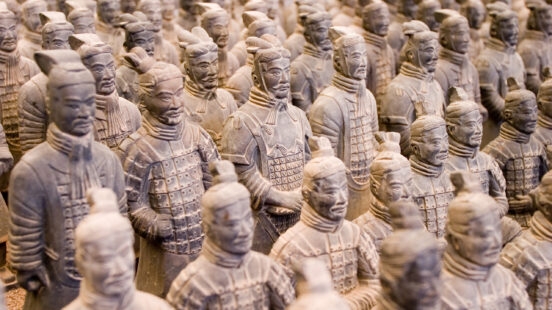
Thousands of terracotta warriors call this part of Xi’An home, making for a vast exploration of intriguing Chinese history. These ancient warriors offer some of the most interesting insights into the world of ancient China that we have access to today. What’s so fascinating about this expansive army is that the unearthing of the soldiers happened completely by chance. In 1974, local workers drilling a well discovered an underground vault that eventually led to thousands of terracotta soldiers and horses in battle formation.
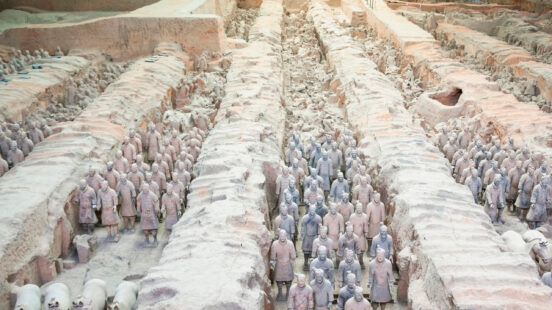
As the attraction has gained in popularity, incredible facts were uncovered – like the fact that no two faces amongst the terracotta army are the same. The wrap around theatre provides an excellent way of showcasing the figures, and added extras such as bronze chariots and horses, as well as original weapons on display make this a truly extraordinary experience.
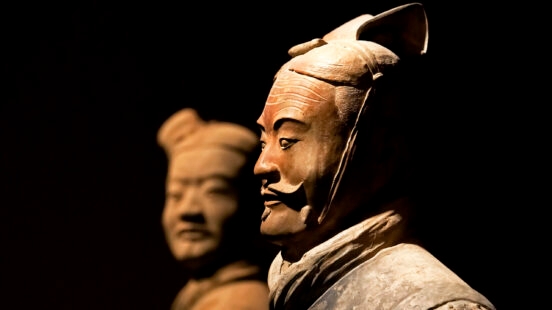

The Forbidden City
China’s Forbidden City is located in the very heart of Beijing, surrounded by 3.5 kilometres (2 miles) of deep red citadel walls. Once the imperial palace complex that ruled China during the ancient Ming and Qing dynasties, the Forbidden City is now one of China’s top tourist attractions. This royal residence gets its name from the fact that only imperial families and high ranking officials were allowed to enter, with commoners having to seek permission.
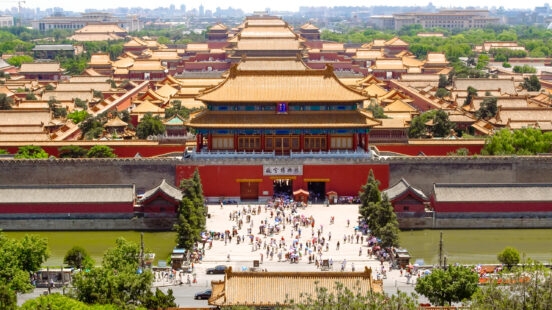
This ethereal palace is made up of 900-plus regal buildings and was the reclusive home to two dynasties until the Republic overthrew the last Qing emperor in 1911. Made up of atmospheric halls, pavilions, imperial gardens and courtyard buildings, Beijing’s Forbidden City offers an unrivalled insight into China’s past.
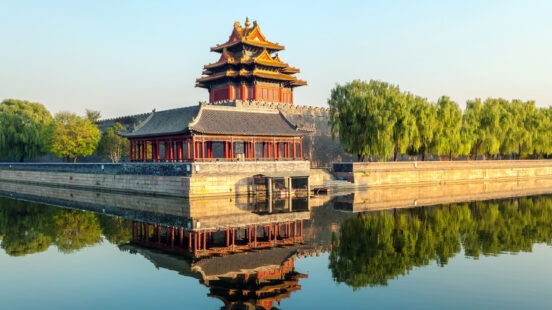
The story of the Forbidden City is just as fascinating as the buildings themselves. This imperial complex was constructed in the 15th century, when Emperor Chengzu of the Ming Dynasty wanted to move the capital of China from Nanjing to Beijing. It was such a big undertaking that as many as 230,000 craftsmen and millions of labourers participated in the palace’s construction. As the Forbidden City covers an astounding 178 acres, we recommend spending a whole day exploring its wonders. There’s an incredible 8,000 or so rooms scattered amongst different parts of the Forbidden City, so you’ll never find yourself stuck for places to explore.
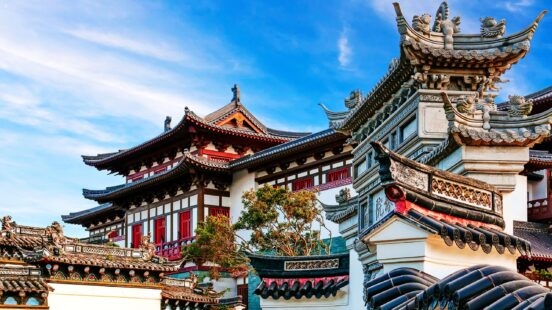

Scale new heights with Lijiang’s mountains
The wonderfully picturesque and historic city of Lijiang is nestled in China’s wild Yunnan province. The UNESCO World Heritage Old Town is characterised by narrow cobbled streets, arched gateways and countless two-storey wooden frame tile-roofed houses. Wandering through the quintessentially Chinese Old Town is a wonderful way to while away an afternoon, but Lijiang’s showstoppers are its awe-inspiring natural landscapes.

From the Jade Dragon Snow Mountain to the Tiger Leaping Gorge, Yunnan province plays host to all kinds of wonderful natural phenomena. The incredible 18,360 foot Jade Dragon Snow Mountain comprises 13 peaks, and is thought to date back to millions of years ago. The view of these 13 peaks scattered through the clouds is said to resemble a jade dragon, giving the mountain range its name. A cable car ride followed by a steep climb takes you to the summit – walking at this altitude can be tough, but the views you’re rewarded with are well worth it.

Located a short 60 kilometres (37 miles) north of Lijiang city, the aptly named Tiger Leaping Gorge is carved out by the Jinsha River, a tributary of the Yangtze. With turquoise waters, sheer cliff faces and lime-green rice terraces making up the landscape, there’s nowhere else on earth quite like it. Although Tiger Leaping Gorge could well have got its name from how dramatic the landscape looks, it actually gets its name from a local legend that tells the story of a tiger and a hunter. According to legend, the hunter chased the tiger through the gorge until it was left with no choice but to leap over the water to its escape. The deepest river canyon in China, this UNESCO natural preservation area is an ecological hotspot, with iconic views from the top of the rocks that are situated here.
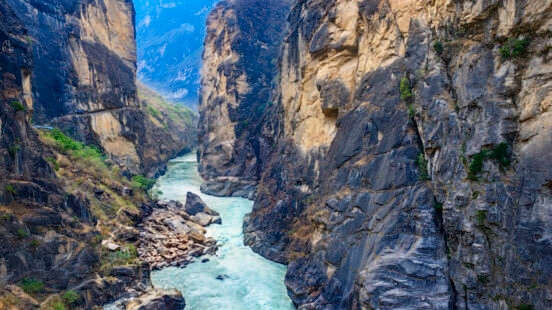
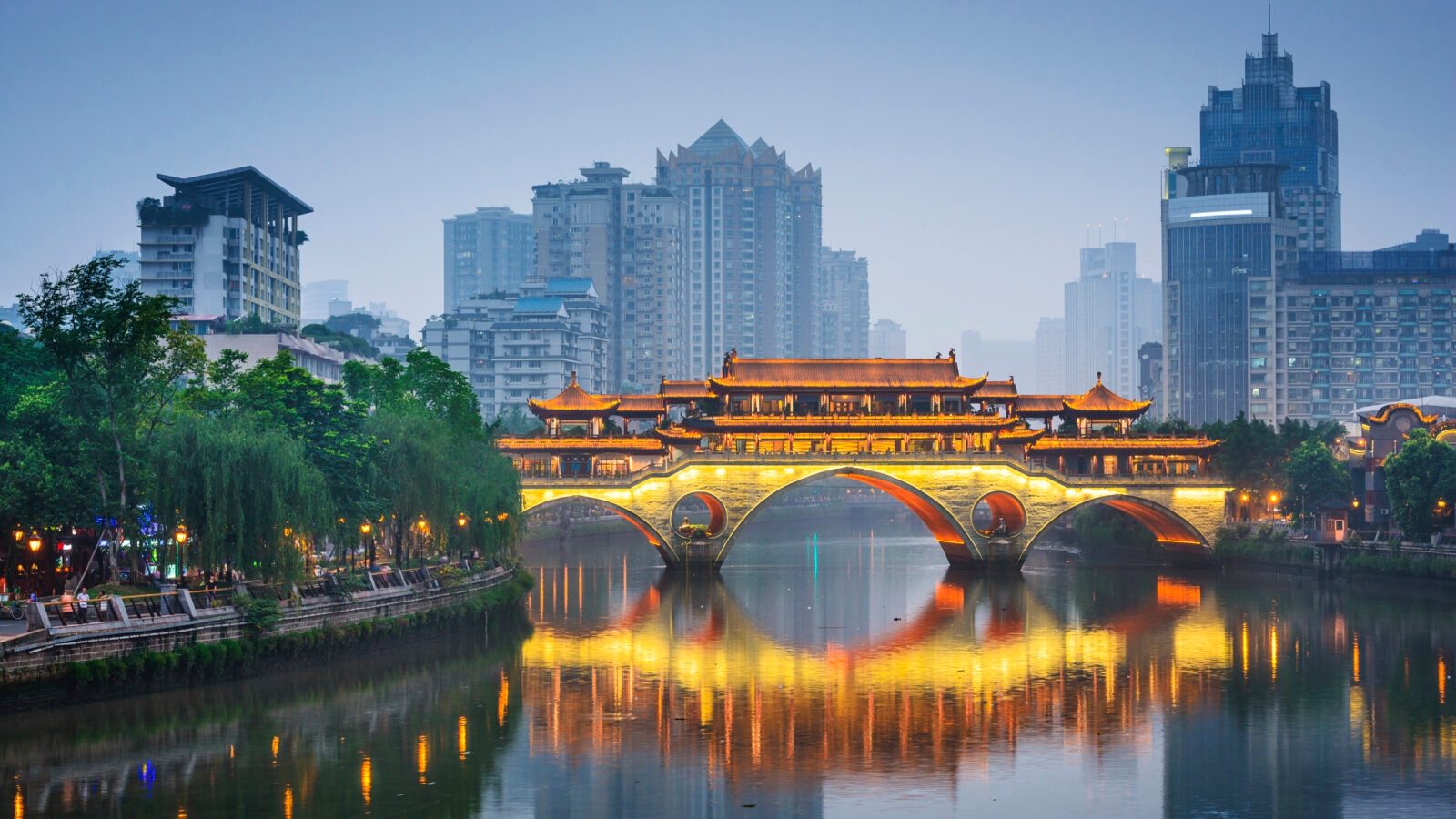
Get acquainted with pandas in Chengdu
In the heart of China’s southwest, the sprawling metropolis of Chengdu is home to delicious cuisine, hidden temples and an impressive skyline. This unique city also sets itself apart from the rest of China, with plenty of green space and neighbouring national parks offering a powerful antidote to city living. A vibrant nightlife scene and an incredible gastronomic heritage mean Chengdu has something for everyone. In fact, the city was named as UNESCO’s first ever City of Gastronomy, and the Chinese hot pots on offer here are some of the best in the world.
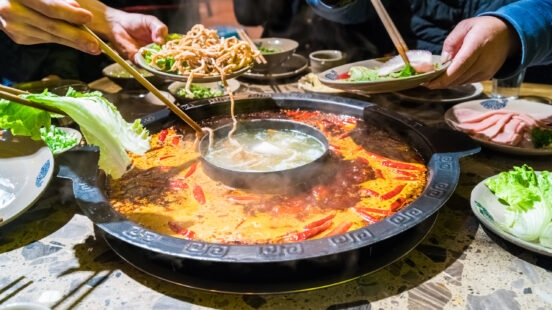
Perhaps Chengdu’s standout feature though is the city’s devotion to the giant panda. Although pandas are native to Sichuan province, the 2008 earthquake damaged much of the pandas’ remaining natural habitat, so there are few native giant pandas left. The best place to see pandas in Chengdu is the Chengdu Research Base of Giant Panda Breeding, a research facility that was purpose-built to help ensure the future survival of pandas. This admirable institution started in 1987 with a population of just six rescued giant wild pandas, which has grown over the years to an impressive one hundred.

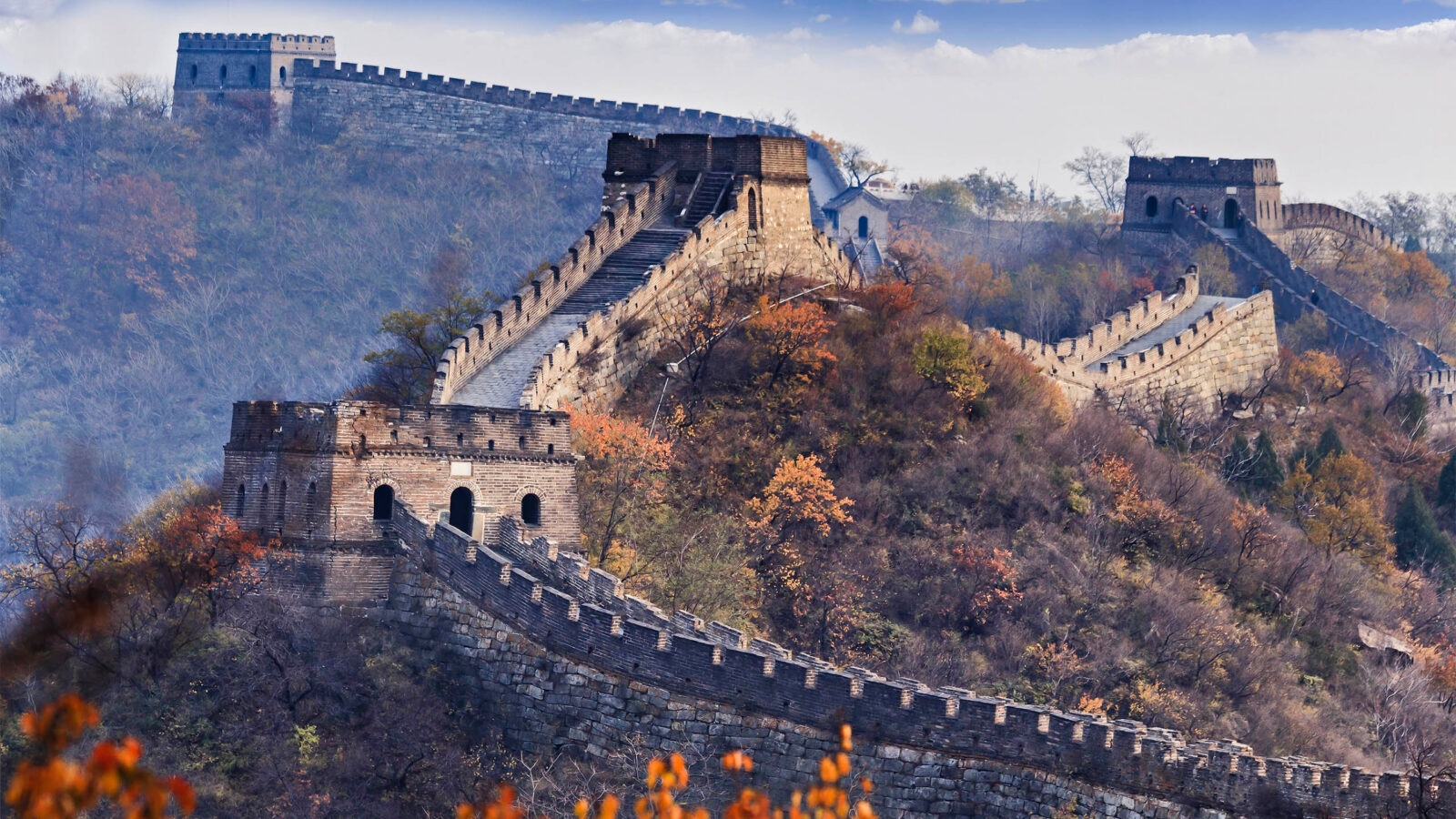
The Great Wall
Understandably, China’s Great Wall often makes it to the top of the list on any China itinerary. An ancient collection of walls and fortifications built thousands of years ago, China’s Great Wall is an unforgettable sight. The Great Wall’s scale is jaw-dropping, with recent estimates putting the official length at some 13,000 miles (21,000 kilometres). The Wall is thought to date back to 2,000 years ago when China was first unified. It’s widely assumed that the wall is one continuous feat of engineering, but in fact the impressive structure is made up of chunks separated by natural defences such as vertiginous mountains.
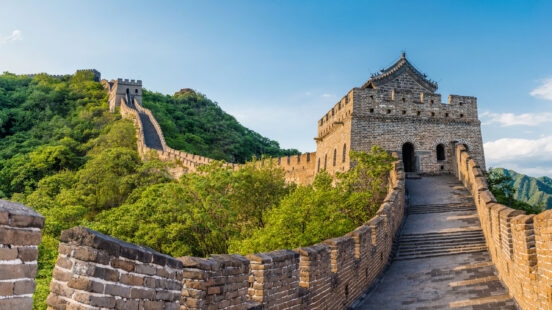
As the scenery surrounding the Great Wall changes with the seasons, it’s a year round destination. In winter, the wall looks beautiful under a blanket of snow, but conditions mean any attempt at trekking is slightly treacherous. In the summer months, extreme heat coupled with teeming crowds and the occasional storm make for a generally unpleasant experience. To experience the best of this UNESCO World Heritage Site, visit between March and May. You’ll be rewarded with minimal crowds as it’s low season for domestic tourists, and temperatures are cool enough to make walking the wall a truly unforgettable experience.


Boat down the Li River
Constantly topping lists of the world’s best water bodies, China’s Li River is other-worldly. This ethereal river originates in the countryside northeast of tranquil Guilin, and winds its way down southeast China until it meets the Xi River in the town of Wulin. One of the most scenic landscapes across China, the Li River and its waterways can be explored by bike, boat or on foot. Most cruises start in the city of Guilin, the first Chinese city to develop tourism. Although rapid development means Guilin itself is slightly losing its charm, the province’s natural wonders still astonish all those who visit. As you cruise from Guilin down to the exquisite landscapes of Yangshuo, you’ll pass endless towering limestone peaks, deep gorges and quaint fishing villages.


Explore Potala Palace in Tibet
The Tibet Autonomous Region of China sits high atop the Tibetan Plateau and is a wonderful melange of spirituality, rich cultural heritage and untouched cities. The capital Lhasa, meaning “place of the gods,” is truly a one of a kind destination. At an elevation of 11,975 feet (3,650 metres), Lhasa is one of the world’s highest cities so it’s easy to see where it gets its moniker from. With more than 1,000 years of cultural and spiritual history, there are some awe-inspiring heritage monuments that shouldn’t be missed.
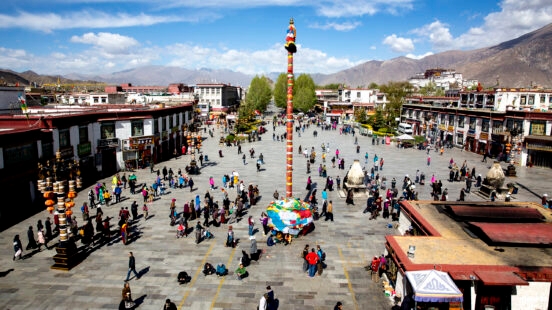
The most impressive monument in Lhasa is the overarching symbol of Potala Palace. Winter palace of the Dalai Lama since the 7th century, the Potala Palace is the overarching symbol of Tibetan Buddhism. A towering palace that climbs up a cliff face with its fortress-like walls, the first time you set your eyes on this magnificent site is not something you’re likely to forget in a hurry. This architectural wonder rises an impressive 13 storeys from Lhasa’s Red Hill and contains more than 1,000 rooms. Decadent chapels, golden stupas and ancient prayer halls make this palace worthy of its place as Tibet’s most famous monument.
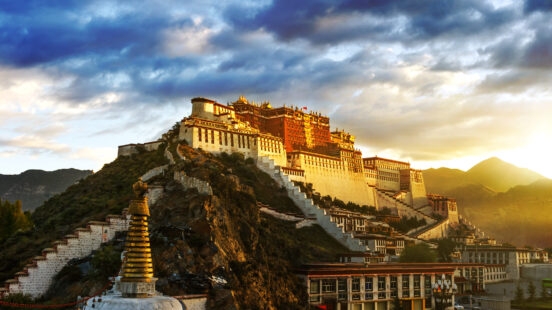

Shanghai's skyscrapers
An international metropolis found on China’s central coast, Shanghai is the country’s biggest city. A city filled to the brim with sights, Shanghai is packed full of Buddhist temples, stunning Chinese gardens and modern skyscrapers. While landmarks such as the Jade Buddha Temple should feature on any trip to Shanghai, travellers looking for a slice of modern China should head to the Bund.

Shanghai’s waterfront boulevard, the Bund is lined with pre-heritage buildings dating from the pre-1940s. The Bund wonderfully marries the old and new sides to Shanghai, with the view out over the river from the boulevard being one of sleek high-rise buildings. This iconic part of Shanghai’s skyline comes alive at night, as the towers are lit with flashing neon lights reflected in the waters of the Huangpu River. While there’s plenty to discover in Shanghai, this world famous panorama of Shanghai’s skyline embodies the China of the future.

Discover China
Feeling inspired? Our expert travel designers are always on hand to help you plan your own tailor-made adventure through China.






